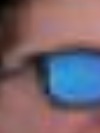InglesT3
|
|
Título del Test: InglesT3 Descripción: Chis kar |



| Comentarios |
|---|
NO HAY REGISTROS |
|
"Properly use the PPE provided by the employer and follow the employer's instructions" is: The workers' duty according to the legislation on Labour Risk Prevention (art. 29th, 2nd). A WHO recommendation. A suggestion from the National Institute for Occupational Safety and Health. The employers' obligation according to the legislation on Labour Risk Prevention. According to the Royal Decree 773/1997, which of the following statements is wrong?. A PPE is any device which is intended to be worn by a person at work and which protects them against one or more risks to his health or safety. PPE is also any accessory intended to protect workers against one or more risks to his health or safety. PPE is a term used to describe the personal protective equipment used in road transport. Sport equipment is not PPE. Any piece of personal protective equipment: Must be legally approved. Must be CE marked. Has to be manufactured by a European Community member. None of the above answers is correct. Gloves protect against: Electrical risks. Abrasions. Cuts. All the above answers are correct. In order to select an appropriate PPE it is essential: To choose a modern design. To ask workers for their opinion. To seek advice from the employer. To assess the labour risks first. Mechanical risks can be avoided by: Using a pair of gloves. Using safety footwear. Using a helmet. All the above answers are correct. PPE is classified according to: The protection level it offers. The type of risk it is intended to protect against. The part of the body it protects. All the above answers are correct. PPE is: All equipment which is intended to rescue vessels and aircraft. The helmets and shields used by the armed forces or in the maintenance of law and order. All equipment which is intended to be worn or held by a worker and which protects him against risks to his health or safety. The acronym stands for Public Protection Evaluation. PPE: Must be used when hazards cannot be avoided. Must be used when the existing risks cannot be sufficiently limited by technical means of collective protection. Must be used when the existing risks cannot be sufficiently limited by means, methods or procedures of labour organization. All the above answers are correct. Safety footwear must have: A Velcro fastener. A three centimetres heel. Reinforced soles. Steal toecaps to protect toes against crushing injuries. Safety helmets protect the head against: Rain. Entanglements hazards. Falling objects. All the above answers are correct. Some of the employers' obligation when buying PPE are: To buy the most appropriate PPE, even if it is not CE marked. To establish rules to enable several workers to use the same PPE. To inform the worker of the risks against which the wearing of the personal protective equipment protects him. None of the above answers is correct. Some of the rules to be followed when using a PPE are: PPEs must be replaced when they are deteriorated or in bad conditions. Workers must be properly informed about how to use them and how to look after them. Training sessions have to be held in order to instruct workers about the proper use PPE. All the above answers are correct. Some of the rules to be followed when using a PPE are: Workers are not required to report if a PPE is in bad conditions. Take into account the manufacturers' technical file when the PPE is to be acquired and used. Workers can share and interchange PPE when these are not going to be used simultaneously by them. All the above answers are correct. Sport equipment is considered PPE: If it is used by a professional sportsman. If it is used in the Olympic Games. Only if it is used following the manufacturers' instructions. Never. When must a Personal Protective Equipment against noise be compulsory used?. Always, even when machinery is kept in isolation and the noise level is inferior to 80 dBA. When occupational noise exposure is over 90 dBA. When occupational noise exposure is over 70 dBA. In all the above mentioned cases if exposure equals 8 hours a day. Which of the following items is not a piece of PPE?. Anti-falling devices. Clothes which protect against extreme cold. Tennis-like nets. High visibility clothing. Which of the following items protect against safety risks?. A face mask. A harness. Chemical and biological hazards. Both answers B and C are correct. Working clothes: Are not considered PPE. Are considered PPE. Are considered PPE if they have the company logo. Must be CE marked. Goggles are used to protect workers from the following hazards: Dust and fumes. Radiations. Both answers A and B are correct. All the above answers are false. |





